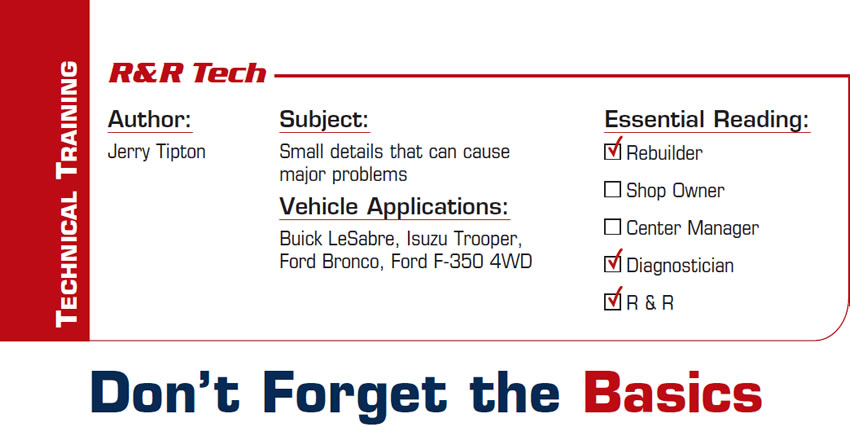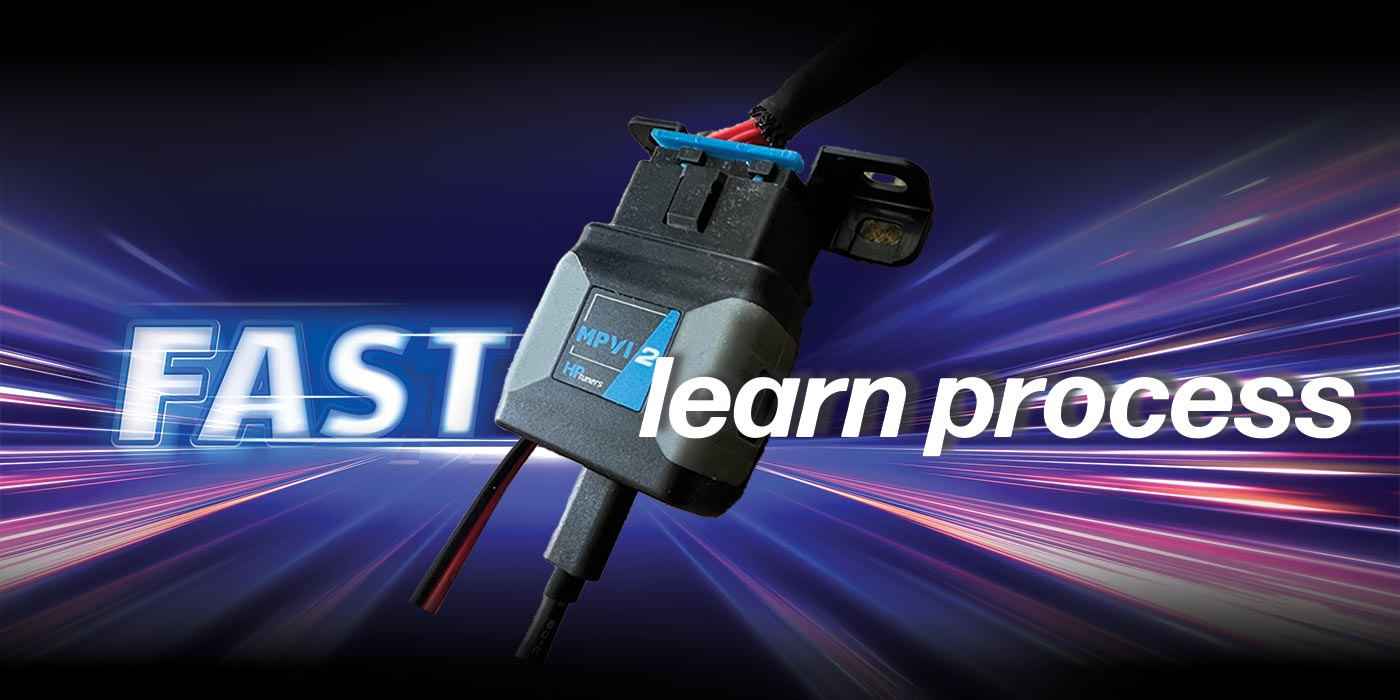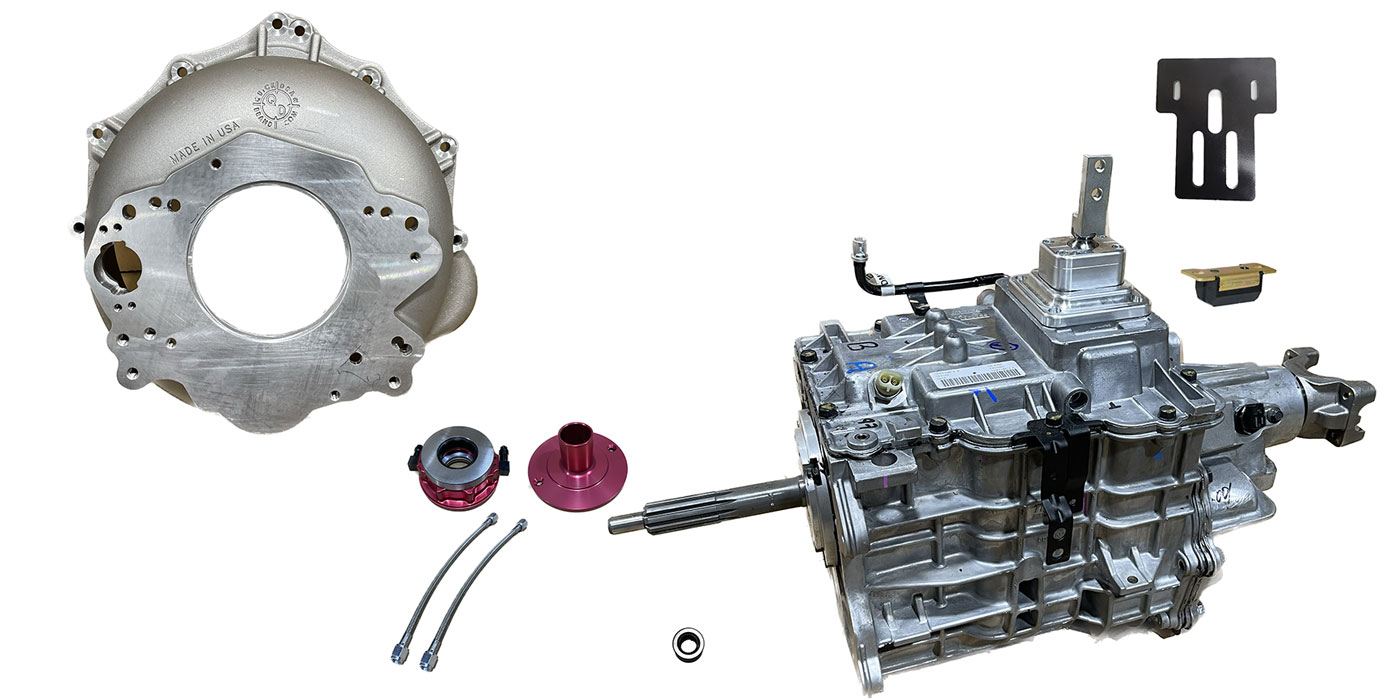
R&R Tech
- Subject: Small details that can cause major problems
- Vehicle Applications: Buick LeSabre, Isuzu Trooper, Ford Bronco, Ford F-350 4WD
- Essential Reading: Rebuilder, Diagnostician, R & R
- Author: Jerry Tipton
When I was asked to write this article I thought, “What vehicle should I write about?”
Instead of choosing just one success story that applies to one vehicle, how about writing something that applies to all vehicles? The thought that I want to convey is to pay attention to the simple things and small details alike, both when diagnosing a problem and when removing and reinstalling a transmission.
With today’s vehicles we know that all the various subsystems work together to make the vehicle perform properly. Scan tools are a must with computer-controlled vehicles, but common sense may play a more-important role than meets the eye. Our company has multiple locations, but my shop is responsible for diagnosing and repairing wholesale-sales warranty issues. These vehicles come to us from other shops to which we have sold carry-out transmissions. I am directly involved with these repairs.
What I often see is that the transmission is not the root cause of the issue, but instead it is the vehicle that is causing the concern. I’ll share some examples of things that I have discovered while diagnosing these “warranty” concerns.
The Buick LeSabre
The customer that called us on this car thought that the transmission was going to blow apart because of the violent shifting that was being experienced. The first step in all my diagnostic processes (after verifying the concern) is to check the basics first, and that is how I found this problem.
I started with an electrical-systems evaluation. What this revealed was that the charging system was running at 18 volts. Knowing that this overcharging condition wreaks havoc with the transmission’s electrical components, I unplugged the alternator and the transmission worked perfectly. The fix in this case was to replace the PCM, since the charging-system output is directly controlled by this module, which wasn’t doing its job. One can only guess whether the original transmission really needed to be replaced.
The Isuzu Trooper
This one came to us with erratic shifts. An electrical check along with a visual inspection of the vehicle made it apparent that this truck had seen its share of corrosive elements. The challenge with this vehicle was that the concern was intermittent, so on the basis of an educated guess and a dose of intuition I installed an extra ground strap directly to the transmission case, and the erratic shifts were gone. The key here is that this was a simple repair to try, and it really should be done with every transmission replacement in these vehicles, as it is a common concern.
The Ford Bronco
A car dealer installed a new 4WD switch and transfer-case shift motor to fix a “4×4 inop” concern. After performing the basic vehicle electrical-system checks, I started diagnosing by checking power to both the 4×4 switch and 4×4 controller; no issue there. I then tested for a voltage signal from the switch to the 4×4 controller; so far, so good. Now it was time to check the voltage signal from the 4×4 controller to the transfer-case shift motor, and there was no signal.
I hadn’t mentioned that this vehicle had been completely restored inside and out. After tracing the wiring and removing the driver’s seat I discovered that when the seat was reinstalled during the restoration, the seat bolt caught the transfer-case wiring harness and ripped it apart. This was a simple case of the dealer technician simply replacing parts and hoping to fix it, but instead repairing the wiring was the solution.
Shall I go on? OK.
The Ford F-350 4WD
This final vehicle was the story that inspired me to write this article. The 2001 Ford 4WD dually was towed in from the local interstate, and according to the customer it had quit moving. This is the most vehicle damage from a minor cause due to a major oversight that I had ever seen.
The front-driveshaft U-joint broke apart and started a chain reaction of damage that nearly totaled the vehicle! The transmission, transfer case, wire harness, fuel lines, brake lines, frame and underbody all sustained some level of damage. Because of this damage, the vehicle stalled and lost its brakes while pulling a loaded trailer. It wasn’t clear whether the R&R technician overlooked a bad U-joint or installed one incorrectly, but the one thing we know is that this customer was left with an expensive repair because a simple item was not checked or repaired properly.
I have seen PCMS and TCMs fix vehicles when a replacement transmission did not. There are many other examples I could go into, but I think you get the point. I guess we all think everything is so complicated, but if we would just check and take care of the basic things it would make our lives (and those of our customers) a lot better. I know some of us have worked in this industry for so long that we can do it with our eyes closed, but maybe we should work on keeping them wide open to keep the customer happy – and earn more repeat business.

Jerry Tipton has been the head diagnostician since 1988 at Transmissions Inc., a sister company of Certified Transmission.













